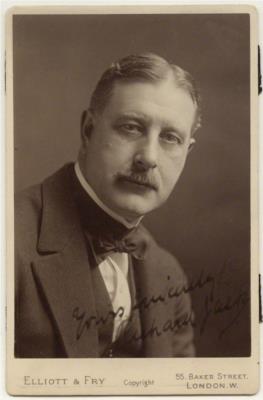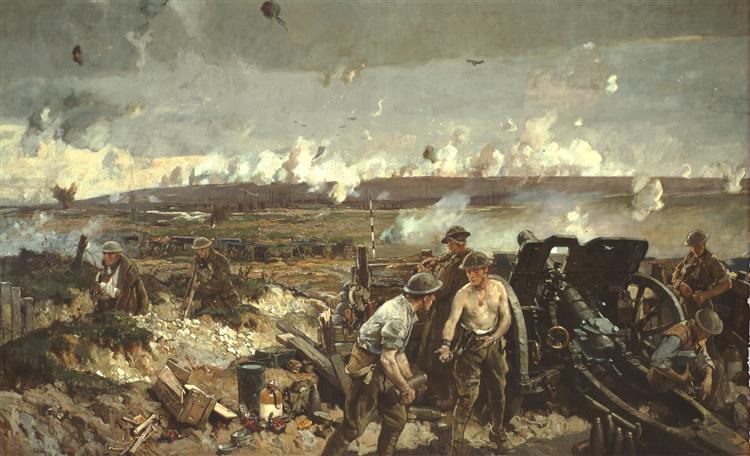
Richard Jack (1866-1952) was a British-born artist whose contributions to portraiture and war art have left an indelible mark on both Canadian and international art history. Born in Sunderland, England, Jack honed his skills at the York School of Art before furthering his education at the prestigious Académie Julian in Paris. His early training laid the foundation for a career that would see him rise to prominence as one of the most sought-after portraitists of his time, as well as Canada's first official war artist.
Early Life and Education
Richard Jack's artistic journey began in England, where he studied at the York School of Art. His talent was evident from a young age, and he quickly moved on to the Académie Julian in Paris, a hub for aspiring artists in the late 19th century. The rigorous training he received in Paris equipped him with the technical skills and artistic vision that would define his later work.
Rise to Prominence
Jack's reputation as a portrait artist grew rapidly. He painted portraits of some of the most notable figures of his time, including King Edward VII, King George V, King Albert of the Belgians, and King Alfonso XIII of Spain. His ability to capture not only the likeness but also the essence of his subjects made him a favorite among royalty and the peerage.
In 1913, Jack's achievements were recognized when he was elected an associate of the Royal Academy, one of the highest honors for an artist in the United Kingdom. The following year, he was awarded the Silver Medal of Honor by the Carnegie Institute in Pittsburgh, further solidifying his status as a leading portrait artist.
Canada's First Official War Artist
In 1916, amid the turmoil of World War I, Richard Jack was commissioned by the Canadian Government to serve as Canada's first official war artist. With the rank of major, Jack traveled to France, where he documented the experiences of Canadian soldiers on the front lines. His works from this period, including "Canadians at the Second Battle of Ypres" and "Vimy Ridge," are among the most significant visual records of Canada's involvement in the war.
These paintings, which now hang in the First World War section of the National Gallery of Canada, are not just historical documents but powerful artistic expressions that convey the gravity and heroism of war. Jack's portrayal of these battles captured the determination and sacrifice of the Canadian troops, earning him a lasting place in Canada's cultural heritage.

Life and Work in Canada
In 1927, Richard Jack visited Canada, where he undertook an ambitious project—painting portraits of 16 prominent Toronto residents in just three months, each for the substantial fee of $5,000. His visit to Canada was a success, and he later settled in Montreal in 1931. The Toronto Star noted Jack's "genius for rapid vivid work, for striking portraiture done with dramatic regard to accessory details." His technique, characterized by swift, confident strokes and a keen sense of design and color, made his works instantly recognizable.
Jack's work extended beyond portraiture. He also painted landscapes, including a series of Rocky Mountain scenes, which were executed with the same dynamic technique as his portraits. While some critics noted that his mountains lacked individuality, his portraits were always considered fine likenesses, even if they did not always capture the sitter's true essence.
Later Years and Legacy
Richard Jack continued to exhibit his work in Canada and abroad throughout his career. His portraits and landscapes were displayed at the Art Gallery of Toronto and the Art Association of Montreal, where they were met with critical acclaim. In 1940, he was elected an Honorary Member of the Royal Canadian Academy, a testament to his significant contributions to Canadian art.
An exhibition of his landscapes at the Stevens Art Gallery in Montreal in 1941 prompted art critic Robert Ayre to describe Jack as "the holiday painter." Ayre praised Jack's ability to convey the pleasure and freshness of his travels through his vibrant use of color and composition. Though Jack did not delve into the depths of human experience in his work, his paintings were celebrated for their ability to bring joy and beauty to those who viewed them.
Richard Jack's works are represented in major collections around the world, including the Tate Gallery in London and the Art Gallery of Pittsburgh. He was a member of the Royal Society of British Artists and the Royal Institute of Painters, further cementing his place in the annals of art history.
Conclusion
Richard Jack's legacy as an artist is defined by his remarkable ability to capture both the grandeur of historical events and the subtleties of human character. Whether through his poignant war paintings or his vivid portraits, Jack's work continues to resonate with audiences today, offering a window into the past and a celebration of the human spirit. His contributions to both Canadian and international art remain significant, ensuring that his name will be remembered for generations to come.
Browse our collection of Canadian paintings for sale at the Canadian Classic Fine Art gallery, The best place to buy a painting online. We provide free shipping anywhere in Canada and the United States. Our Montreal art gallery sells paintings online exclusively and have a 14 days return policy.
